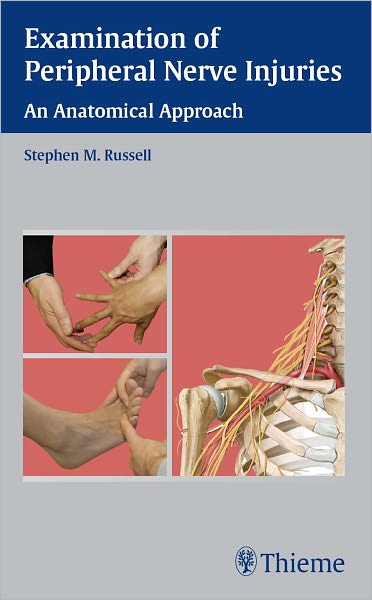Examination of Peripheral Nerve Injuries: An Anatomical Approach ebook
Par castillo dorothy le jeudi, février 16 2017, 22:11 - Lien permanent
Examination of Peripheral Nerve Injuries: An Anatomical Approach by Stephen Russell


Examination of Peripheral Nerve Injuries: An Anatomical Approach Stephen Russell ebook
Format: pdf
Publisher: Thieme
ISBN: 9781604065282
Page: 192
Dec 15, 2013 - Nearly 100 color illustrations provide the clear anatomic information needed to refine clinical diagnosis. � Detailed discussions address relevant anatomy, followed by a discussion of lesions related to each anatomic feature. Absent peripheral autonomic arousal, in patients with autonomic denervation, was associated with decreased conditioning-related activity in insula and amygdala. No function (A), sensory only (B), some sensory and motor preservation (C), useful motor The scale cannot be applied if that examination has not been not done or extenuating circumstances such as surgery, peripheral nerve injury, or other conditions compromised anal sensation or function. Dec 24, 2009 - Palsies involving the anterior interosseous nerve (AIN) comprise less than 1% of all upper extremity nerve palsies. The most common cause of upper extremity vascular which it supplies [14]. Improvements in diagnostic approaches and microsurgical techniques have dramatically changed the prognosis and functional outcome of these types of injuries. A focused history and thorough physical examination, combined with a working knowledge of normal vascular anatomy, can help identify most vascular abnormalities of the upper extremity. The evaluation of brachial plexus. � Comprehensive coverage addresses all brain regions, as well as cranial, spinal, and peripheral nerves. Radial and ulnar arterial injuries make up 5-30% of all peripheral vascular injuries [2]. Feb 15, 2014 - Here, we examined the role of the sympathetic innervation in the inflammation of L5 DRGs of Wistar rats following transection of the sciatic nerve, comparing the effects of specific surgical interventions 10-14days prior to the nerve lesion with those of chronic administration of adrenoceptor antagonists. Moreover, a series of specialized electrodiagnostic and nerve conduction studies in association with the clinical findings during the neurologic examination can provide information regarding the location of the lesion, the severity of trauma, and expected clinical outcome. Dec 19, 2008 - First devised at Stokes Manville before World War II and popularized by Frankel in the 1970′s, the original scoring approach segregated patients into five categories, i.e.
Download Examination of Peripheral Nerve Injuries: An Anatomical Approach for mac, kindle, reader for free
Buy and read online Examination of Peripheral Nerve Injuries: An Anatomical Approach book
Examination of Peripheral Nerve Injuries: An Anatomical Approach ebook pdf zip epub mobi rar djvu